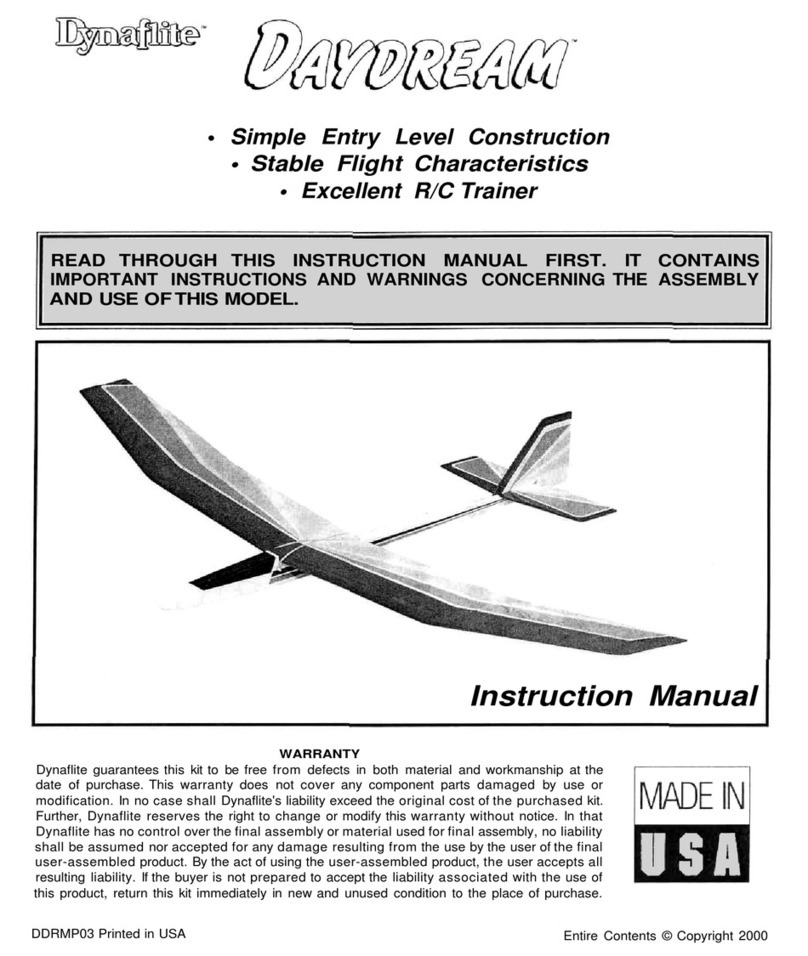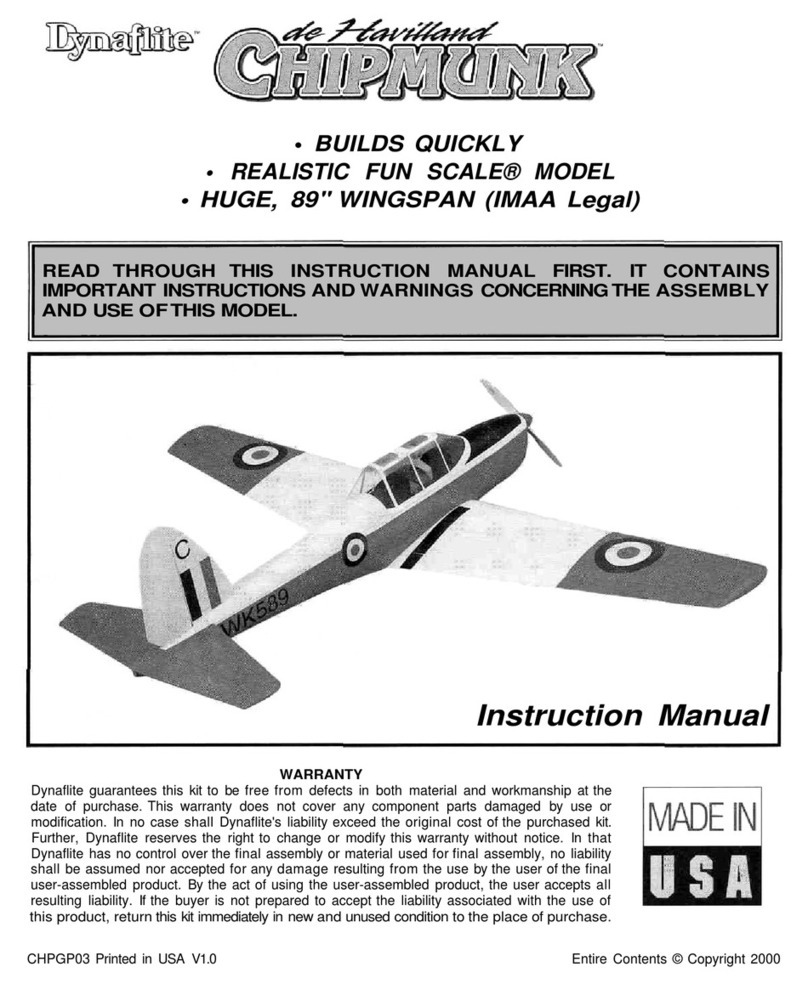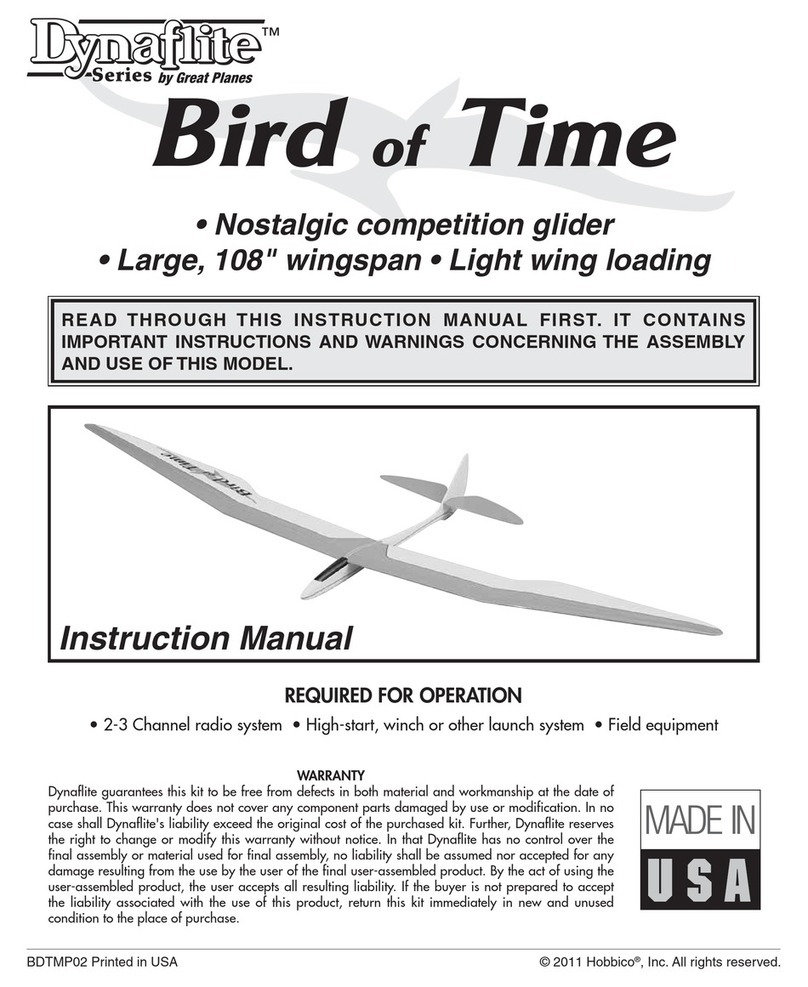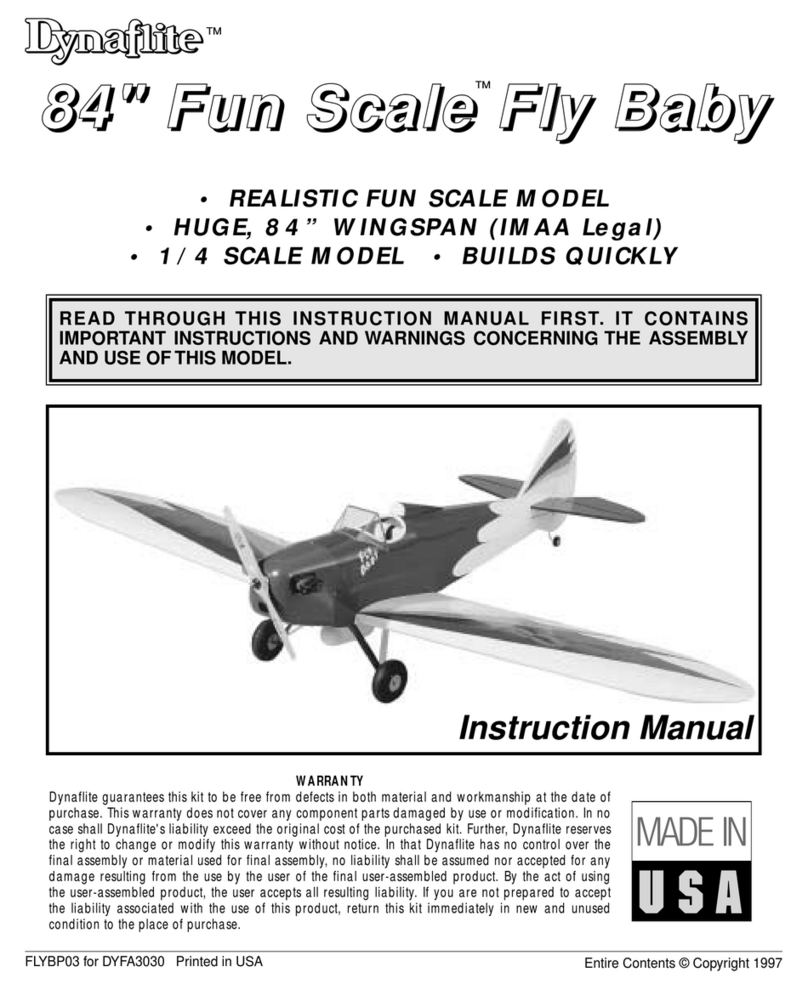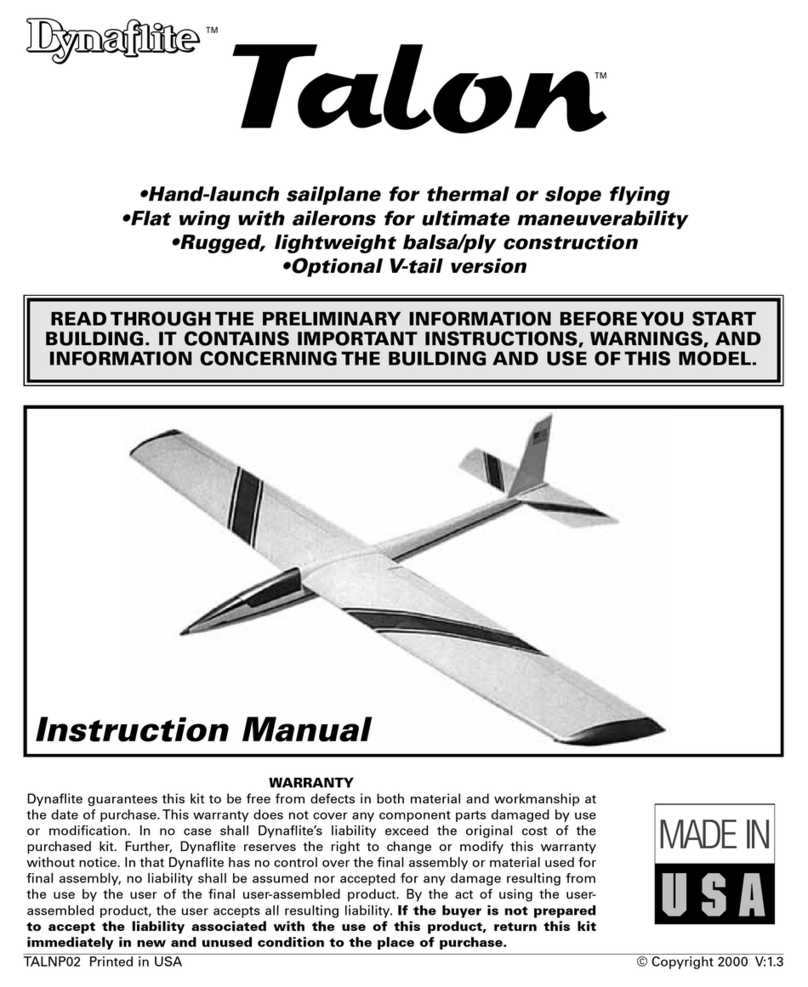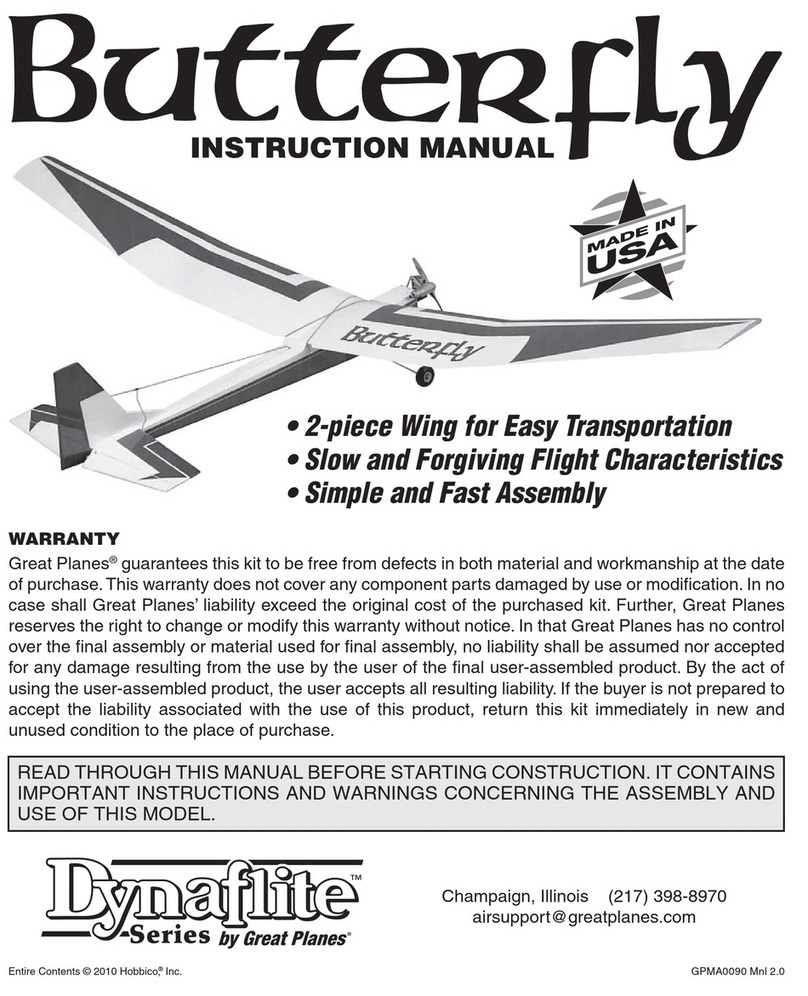Introduction
......................................................2
Precautions.......................................................3
Preparations.....................................................3
Required
Accessories
.......................................3
SuggestedSupplies
.........................................3
Optional
Accessories
.......................................4
BuildingNotes.................................................4
Adhesives
.......................................................4
Common Abbreviations....................................5
Types
of
Wood
................................................5
MetricConversion............................................5
DiePatterns ................................................6&7
Build
the Fuselage ...............................................8
Build
the Wing .....................................................12
BuildtheAilerons ...........................................................16
BuildtheStabilizer
&
Elevators ...........................17
BuildtheVertical
Fin
&
Rudder .........................19
Mount
the
Wing
to
the
Fuselage .........................20
FinalAssembly .................................................22
Finishing..........................................................26
Set TheControlThrows...................................27
Balance
Your
Model.......................................27
Preflight..................................................27
AtHome...............................................................27
At theFlying
Site
...........................................28
Engine
Safety
Precautions................................28
FLYING.............................................................28
Finda
Safe
Place
to
Fly..................................28
Takeoff..........................................................29
Flight.........................................................29
Landing
........................................................29
Terms
&
Definitions
........................................30
Cockpit&WingTipPatterns...........CenterSpread
Congratulations onyourchoiceofthis kitfor your
next project.The Fairchild PT-19 isa FunScale®
modelof a true classic aircraft and has thepresence
thatonlya bigmodelcan carry off.
At Dynaflitewe take prideinoffering kitsthat are
simple and straight forward tobuild and provide
value for yourmodelingdollar.Because of the size
and cost of thismodel we assume you have built
severalmodelsandhavea generalworking
knowledgeof modelingand itsterms. Ifyou HAVE
NOTbuiltand flown several kits, doyourself a favor
andgetsomeexperiencebefore beginningthis kit.
Your PT-19 isnota toy,buta sophisticated working
modelthat functionslikea full-size airplane.Because
of its performance,if you do not assembleand
operatethePT-19 correctly,youcouldpossiblyinjure
yourselfor spectatorsanddamageproperty.
Tomake your R/C modeling experience totally
enjoyable,we recommendthatyougetassistance
withassemblyand your firstflightsfroman
experienced,knowledgeablemodeler.You'll learn
faster and avoid risk toyour modelbefore you're
trulyready to solo.Your local hobby shop has
information about flying clubs inyour area whose
membershipincludesqualifiedinstructors.
Youcan also contact thenationalAcademy of Model
Aeronautics (AMA), which has more than 2,300
chartered clubs across thecountry. We recommend
you join the AMA which will provide you with
insurance coverage at AMAclub sites and events.
AMA Membership isrequired at charteredclub
fields where qualified flight instructors are available.
Contact theAMAat theaddress ortoll-free phone
numberbelow.
Academy of ModelAeronautics
5151 East MemorialDrive
Muncie,IN47302
(800)435-9262
Fax(765)741-0057
2

